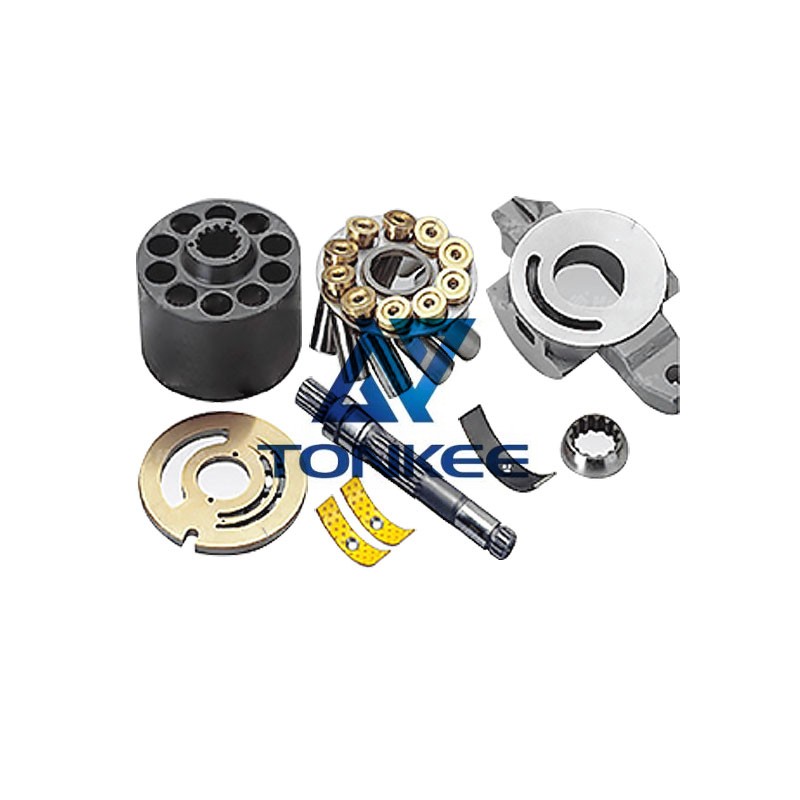
Piston Assembly: The heart of the hydraulic pump, the piston assembly, consists of pistons, piston shoes, and swash plate.
The pistons reciprocate within the cylinder block, creating hydraulic pressure.
Cylinder Block: This component houses the pistons and is responsible for converting mechanical energy into hydraulic energy.
Swash Plate: The swash plate is an integral part of the axial piston pump design, allowing for the adjustment of the pump's displacement and, consequently, the hydraulic flow rate.
Valve Plate Assembly: The valve plate assembly controls the flow of hydraulic fluid within the pump, ensuring proper pressurization and distribution.
Drive Shaft: The drive shaft connects the pump to the prime mover, typically an electric motor or internal combustion engine.
Bearings and Seals: These components ensure smooth operation and prevent leakage.
Piston Shoes: Replacement piston shoes are essential to maintain the integrity of the piston assembly.
Worn or damaged piston shoes can lead to reduced pump performance and increased wear.
Seals and O-Rings: Seals and O-rings play a vital role in preventing hydraulic fluid leakage. Over time, these components may wear out, necessitating replacement to maintain system integrity.
Valve Plate Components: Valve plates and related components may require replacement if there is wear or damage affecting the flow control within the pump.
Bearings and Bushings: These components contribute to the smooth operation of the pump. Replacement may be necessary if there is excessive wear or damage.
Gaskets: Gaskets are used to seal various pump components. A complete repair kit should include replacement gaskets to ensure leak-free operation.
Instruction Manual: A comprehensive repair kit often includes an instruction manual with step-by-step guidance on disassembly, inspection, and reassembly of the pump, aiding technicians in the repair process.



 English
English Türkçe
Türkçe


